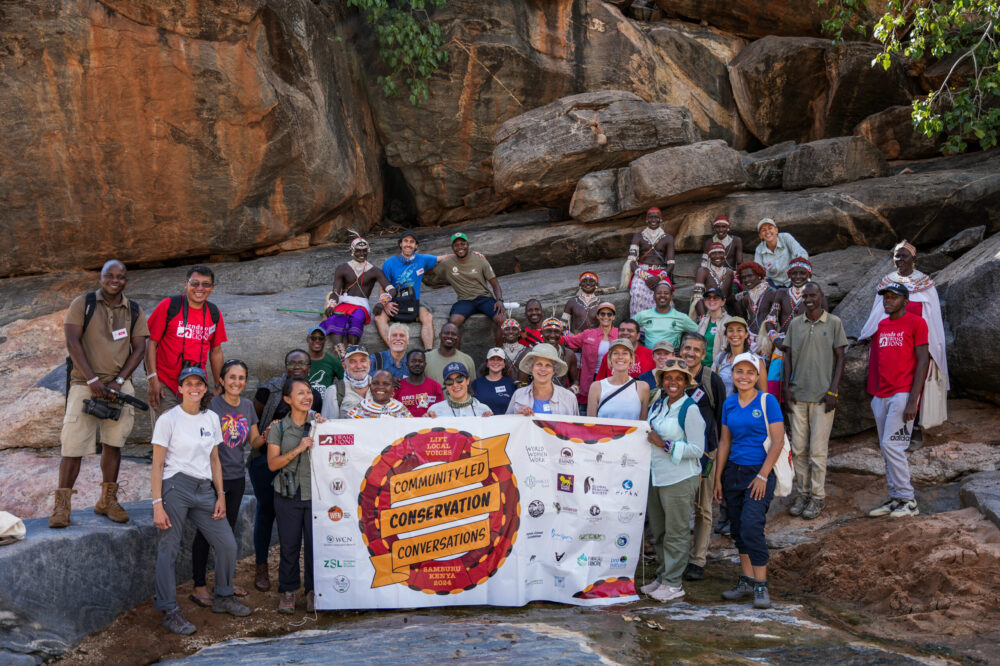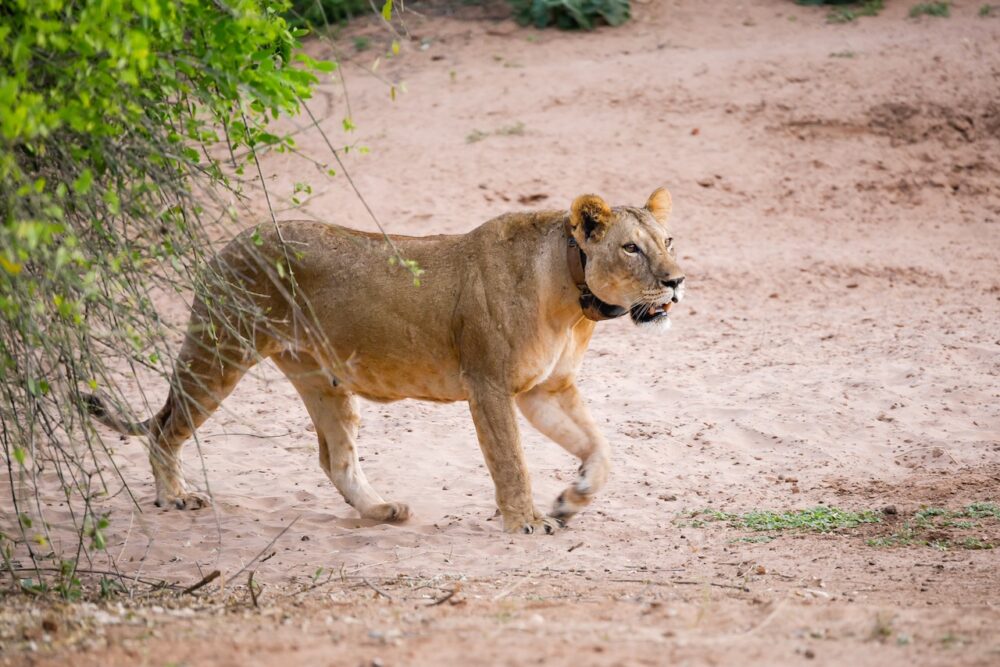Here is another blog from guest blogger Nina Fascione- Click here for 1st blog
One day, Steve and I accompanied Shivani when she gave a presentation to the 25 West Gate Community Community scouts who patrol the conservancy monitoring wildlife, enforcing security in the area, preventing illegal grazing in protected core areas, and sensitizing communities to the importance of wildlife.
Working in the bush can be difficult, and giving a PowerPoint talk presented its own unique set of problems. First, we had to borrow a generator and projector to show the PowerPoint images. However, we quickly realized that the village rotunda where Shivani planned to give her talk was far too light from the bright African sun for the pictures to show on the screen. So, we gathered shukas (traditional, colorful wraps) and hung them around the rotunda to try to block out the light. No luck.
Setting up the equipment – projector, screen, generator
We then moved the equipment into a near-by office at the Conservancy Headquarters and covered the windows with blankets. It worked to block out the light, but quickly became a sauna with so many bodies crammed into such a small and airless place. Nonetheless we persevered, and Shivani gave her presentation. She focused on conflict with wildlife and led a discussion on how to prevent it. She also showed images of various wildlife tracks and worked with the scouts to identify the various paw prints. It was a very productive talk. Interestingly, the suggestions from the scouts as to what tools might work to prevent conflicts with lions, hyenas and other African predators were identical to the methods used in the United States, such as guard dogs and compensation programmes to reimburse for livestock killed by predators. One interesting idea was the suggestion from one scout that they practice “natural selection of livestock” to breed livestock that would be more resistant to predators.
Raphael and Shivani going through tracks of different predators
After lunch, I gave a presentation on my work at Defenders of Wildlife. I was struck by the similarities with Shivani’s talk: human-wildlife conflicts, habitat loss, the problem of pesticides such as carbofuran hurting the environment in both countries and so on. The topics were the same, the species different.
Explaining about human-wolf conflict in the US
The scouts were fascinated by my slides of North American wildlife – most of them had never seen images of our animals before. While they thought that wolves were interesting – we explained they were like wild dogs – they thought that grizzly bears were really cool. I had never had such a rapt audience in my life. I had also never given a talk where every audience member carried a gun! It was a little disconcerting but without a doubt the most enjoyable presentation I have ever given.
Scouts listening intently
Upon returning to work back in Washington, DC, it was fun to then give a presentation on the wildlife and people of Samburu to my co-workers, completing the sharing of information across continents.
As someone who has maintained both a personal and professional interest in wildlife conservation for years, I cannot praise Shivani’s work enough. While her main focus is on the lion population in West Gate Community Conservancy and the nearby Samburu National Reserve, Shivani knows that any successful conservation programme must be comprehensive, incorporating both biological and sociological components. The relationships she’s building with the Samburu people, along with the outreach and education she provides, will clearly help Northern Kenya’s lions and other wildlife for years to come. I encourage all of you who care about Africa’s predators to support her work. And by all means, plan a visit to see this wonderful country and these magical creatures with your own eyes. Steve and I were sad to leave Shivani and her staff, and we can’t wait until our next trip!








